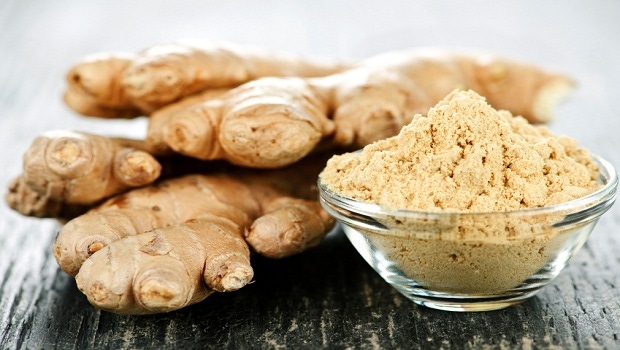Increasing Bioavailability with Spices

Nutrients are only useful if the body absorbs them. The nutrition industry is full of apocryphal stories of vitamin pills that fill septic tanks after passing undigested through the body. Bioavailability measures how well nutrients are assimilated into the body. Some nutrients are relatively easy to assimilate, while others are notoriously difficult.
Herbs and spices have been used since ancient times for their ability to enhance the flavor and enjoyment of foods, and to preserve foods for storage and later consumption. However, herbalists know certain herbs and spices can also aid proper digestion, and increase the bioavailability of other nutrients. We are just beginning to understand how some of these herbal medicines work. Many spices show great promise as bioavailability enhancers, helping the body properly absorb and make use of other nutrients.
For example, salt (NaCl, with magnesium and other trace elements) is not only a flavor enhancer, it also plays a vital role in the secretion of hydrochloric acid (HCl) in the stomach, the first step in the digestive process after chewing. This acid is essential in breaking the food down to its various nutrients so they can be absorbed by the gut into the bloodstream and carried throughout the body. Salt is easily assimilated, as it easily dissolves in water, breaking into small ions (single atoms, in this case) that easily penetrate body tissues, membranes and cell walls.
Other important nutrients are not easily dissolved and can be much more difficult to get into the blood stream. Calcium and silicon, for example, are important elements for building hair, nails and bone, but can be hard to get into the body in a way that is easy to absorb. So-called mineral water" contains undissolved solids that cannot easily penetrate cell walls and cause hard water deposits in household plumbing fixtures. In fact, there is some question whether minerals in water are really absorbed by the body to any meaningful degree.
One way to increase bioavailability of nutrients is to increase blood flow in the digestive tract. For example, physical activity increases heart rate and circulation throughout the body, and within limits, can enhance digestion and increase the uptake of nutrients from food or supplements. However, digestion is a resting activity, and intense exertion can actually divert blood flow from the gut and reduce or postpone digestion. Ideally, we would like to increase blood flow in the gut alone to exert a more immediate and localized influence on nutrient uptake.
One way to locally increase blood flow is to trigger TRPV1 receptors in the digestive tract. TRPV1 is a protein receptor that plays an important role in sensing heat and the regulation of body temperature. The receptor is normally triggered by contact with temperatures exceeding 43 degrees Celsius (109 degrees Fahrenheit). However, it can also be triggered by certain chemical signals, so it is also sometimes called the vanilloid receptor 1 or the capsaicin receptor. Once triggered, the TRPV1 receptor causes blood vessels to dilate and increases local blood flow, in order to dissipate the perceived heat and prevent possible injury. The TRPV1 receptor can be either sensitized or desensitized with exposure to different types and levels of stimuli.
Many compounds found in common spices are known agonists, or triggers, of the TRPV1 receptor. These include ginger (gingerols) as well as black pepper and its cousin long pepper (piperine). But perhaps the best known TRPV1 agonist is capsaicin, the compound that gives chili peppers (genus capsicum) their famous heat. Small wonder that these particular spices have been associated with digestion for many centuries and in many different cultures.
In the Ayurvedic healing tradition of ancient India, the go-to formula for poor digestion is Trikatu, meaning three pungents"a blend of equal portions of ginger (Zingiber officinale), black pepper (Piper nigrum) and long pepper (Piper longum). Recognized as a warming formula, Trikatu works in the upper gastrointestinal (GI) tract, where it is said to enhance the "digestive fire" responsible for breaking down food and absorbing nutrients.
Capsicum or chili peppers are originally native to the Americas, and were a staple of the Aztec diet. Christopher Columbus, thinking he had reached the Indies, originally called these berries red pepper," and the confusion with the pepper plants of India has persisted ever since. From Europe, the chili pepper was introduced to every other continent, and herbalists have widely acclaimed them for almost every imaginable digestive condition.
Other lesser known spices also contain known TRPV1 agonists, such as, the Sichuan pepper (Xanthoxylum piperitum) and the American prickly ash or toothache tree (Xanthoxylum americanum) both contain sanshools. Cloves (Syzygium aromaticum), camphor (Cinnamomum camphora) and various acids can also trigger TRPV1.
Certain herbs and spices have long been known to enhance digestion and increase the bioavailability of nutrients in food. However, the mechanism of action of these herbs, and the role of the TRPV1 channel in bioavailability, is just coming to light. Given the importance of bioavailability in the nutrition industry, it is no wonder that these ancient spices are still hot stuff" today.
Matt Warnock is the president of RidgeCrest Herbals a creator of eclectic and innovative natural remedies for specific health needs.
About the Author(s)
You May Also Like




.png?width=800&auto=webp&quality=80&disable=upscale)